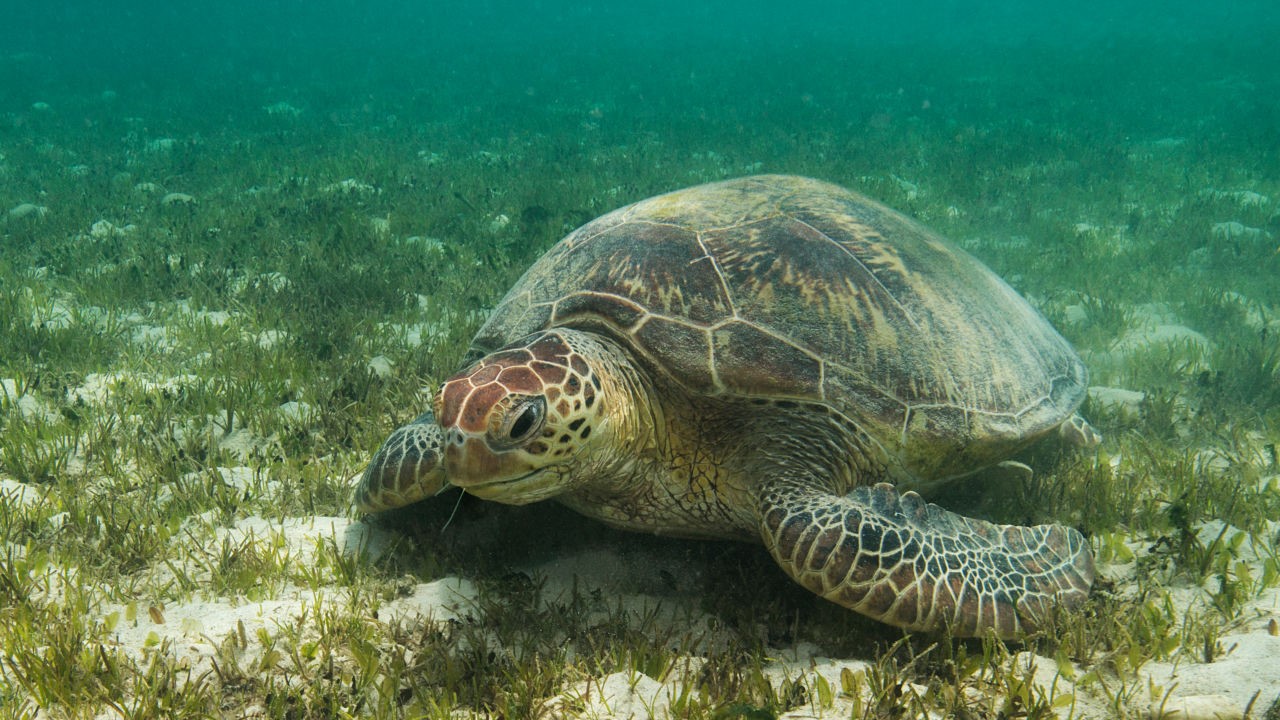
Ever wondered what's lurking beneath the ocean's surface, playing a silent yet critical role in our planet's health? Seagrass might not be the first thing that pops into your head, but it's about time it does. These underwater meadows are more than just a hideout for small fish or a grazing ground for turtles; they're superheroes of the marine ecosystem. From carbon storage powerhouses to the foundation of marine biodiversity, seagrasses hold secrets and stories that are nothing short of fascinating. Ready to dive into a world where green blades sway with the currents, sheltering a bustling community below? Let's unravel the mysteries and marvels of seagrass together, discovering 20 amazing facts that highlight why these not-so-ordinary grasses are vital to our existence and the ocean's health.
Key Takeaways:
- Seagrass is a vital underwater plant that provides homes and food for many marine animals, helps fight climate change, and protects coastlines from erosion.
- Conservation efforts and public awareness are crucial for protecting seagrass meadows and the diverse marine life they support.
What is Seagrass?
Seagrass, often mistaken for seaweed, is actually a group of flowering plants that have adapted to live fully submerged in saltwater. These remarkable plants play a crucial role in coastal ecosystems, providing habitat, food, and oxygen to a diverse array of marine life. Unlike seaweed, which is algae, seagrass has roots, stems, and leaves, and some species even flower and produce seeds underwater.
Why is Seagrass Important?
-
Seagrass meadows are biodiversity hotspots. They serve as nurseries for many species of fish, crustaceans, and shellfish. Juvenile fish find shelter among the leaves, making these meadows critical for the survival of various species and the health of fisheries.
-
These underwater gardens are also carbon sinks. They absorb carbon dioxide from the water and atmosphere, helping to mitigate climate change. In fact, seagrass can capture carbon from the atmosphere up to 35 times faster than tropical rainforests.
-
Seagrass beds protect coastlines from erosion. Their root systems help stabilize the sea floor, reducing the impact of waves and storms on shores.
How Does Seagrass Reproduce?
Seagrass reproduces in a couple of fascinating ways. Some species use underwater pollination, where pollen is released into the water and carried by currents to fertilize other plants. Others reproduce asexually, through processes like rhizome extension or fragmentation, where parts of the plant break off and grow into new individuals.
Threats to Seagrass Meadows
-
Pollution from agricultural runoff, sewage, and industrial waste can suffocate seagrass, preventing it from getting the sunlight it needs to survive.
-
Climate change poses a significant threat through rising sea temperatures and ocean acidification. These conditions can stress seagrass plants, making them more susceptible to disease and reducing their reproductive success.
-
Physical damage from boat propellers, anchors, and coastal development can destroy seagrass habitats. Once damaged, these ecosystems can take decades to recover, if they recover at all.
Seagrass and Marine Life
-
Seagrass meadows are home to endangered species like the green turtle and the dugong, which rely on seagrass as a primary food source.
-
These ecosystems support a high density of life, with some studies estimating that up to 40% of marine species spend part of their life in seagrass meadows.
-
Seagrass acts as a filter, improving water quality by trapping sediments and pollutants in its leaves and root systems.
Conservation Efforts
-
Around the globe, conservationists are working to protect and restore seagrass meadows. Efforts include reducing water pollution, implementing marine protected areas, and physically replanting seagrass in areas where it has been lost.
-
Public awareness campaigns are crucial for seagrass conservation. Educating boaters about the importance of avoiding seagrass beds and promoting sustainable fishing practices can help reduce damage to these vital ecosystems.
-
Advances in science and technology, such as drone mapping and genetic studies, are helping researchers better understand seagrass biology and the challenges these plants face. This knowledge is key to developing effective conservation strategies.
Seagrass Around the World
-
Seagrass can be found in every continent except Antarctica. The largest seagrass meadow in the world, the Great Barrier Reef's seagrass beds, covers over 152,000 square kilometers.
-
There are about 60 different species of seagrass, each adapted to specific conditions ranging from shallow estuaries to deep underwater meadows.
-
The Mediterranean Sea is home to the Posidonia oceanica, also known as Neptune grass, which forms meadows that are thousands of years old. Some of these meadows are considered among the oldest known living organisms on Earth.
Fun Facts About Seagrass
-
Seagrass produces oxygen underwater through photosynthesis, contributing significantly to the oxygen available in the ocean.
-
Despite living in salty environments, seagrass needs fresh water to survive. It extracts fresh water from seawater through its roots.
-
Seagrass meadows can be quite dense, with some areas containing up to 3,000 plants per square meter.
-
The presence of seagrass can reduce the acidity of the surrounding water, providing a buffer for ocean acidification and creating a more hospitable environment for marine life.
-
Seagrass has been used by humans for centuries, in everything from roofing materials to insulation, and even as a filling for mattresses. Today, its ecological importance far outweighs these traditional uses, highlighting the need for its conservation.
A Final Dive into Seagrass Wonders
Seagrass meadows are more than just underwater landscapes. They're vital ecosystems that play a crucial role in the health of our planet. From acting as carbon sinks to providing habitats for marine life, the benefits of these aquatic gardens are vast and varied. Understanding their importance is the first step towards protecting them. With human activities posing threats to their existence, efforts to conserve and restore seagrass meadows are more important than ever. By spreading awareness and supporting conservation initiatives, we can help ensure these underwater treasures continue to thrive. Let's not forget, the health of seagrass is directly linked to the health of the planet. So, taking care of them means taking care of our future.
Frequently Asked Questions
Was this page helpful?
Our commitment to delivering trustworthy and engaging content is at the heart of what we do. Each fact on our site is contributed by real users like you, bringing a wealth of diverse insights and information. To ensure the highest standards of accuracy and reliability, our dedicated editors meticulously review each submission. This process guarantees that the facts we share are not only fascinating but also credible. Trust in our commitment to quality and authenticity as you explore and learn with us.


